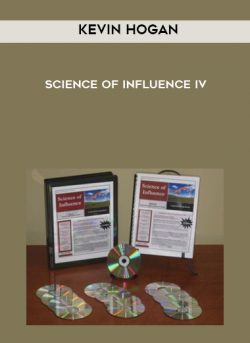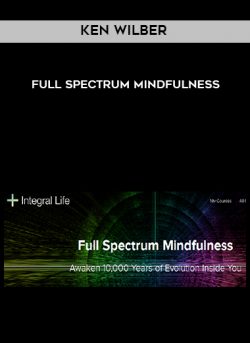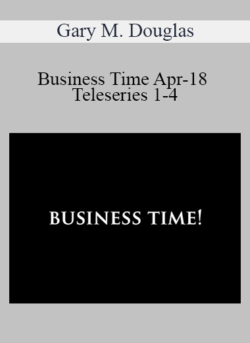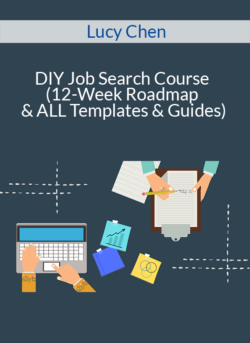Robert Dilts – Logical Level Alignment
$39.00
Product Delivery – You will receive Content Access Via Email.
Email – [email protected]
Description
 Robert Dilts – Logical Level Alignment
Robert Dilts – Logical Level Alignment
I know it’s GOOD because it’s from Robert Dilts. I am sure that you cannot find this RARE product else where in, other product site / emule / winmx, until I share it now!!!!!!!!!!!!!! it’s a VERY HIGH quality video comparer to his other product in 199X [img]http://shop.nlpco.com/core/media/media.nl?id=98&c=321333&h=aa1c4a945000d3e0b191 [/img]
Logical level alignment – defining your identity
We sort and store information on several different “logical levels”: environment (the room is warm); behavior (I am yawning); capabilities (I can stay awake); beliefs (falling asleep is rude); identity (I am good if I stay awake); and in some contexts, spirit. Each level influences the ones below it. For example, a belief influences behavior. Robert demonstrates how to collect information from all logical levels and use the information to facilitate change. On this video, he works with a young woman suffering from arthritis.
One of the most popular and pervasive models in NLP: Logical Level Alignment on DVD!
”We sort and store information on several different “logical levels”: environment (the room is warm); behavior (I am yawning); capabilities (I can stay awake); beliefs (falling asleep is rude); identity (I am good if I stay awake); and in some contexts, spirit. Each level influencesthe ones below it. “Robert Dilts (adapted from R. DILTS) Based on the work of Gregory Bateson, Robert Dilts has delineated a model of human behaviour, which is called the Model of the Logical Levels. It assumes that human processes can be described along a ladder of categories that influence each other. The lowest level is the environment, followed by behaviour, capabilities, beliefs/values and identity. Beyond identity, the model opens up to “the other”, i.e. systems that include other human beings – the familiy, the community, and the world. Figure 1: Levels of Change
According to the model, the levels influence each other in both directions, but a change on a higher level will have a greater impact on the lower levels than vice versa. For example, learning a new skill at first instance (capability level), e.g. a language, might open me up both to the importance of other cultures (values level) and my identity – I belong to the world (identity level). It certainly changes my behaviour -suddenly I can talk to people to whom I could not have talked before. There might even be a dramatic change in my environment – I might move to an other country. If, on the other side, the belief level is changed first, e.g., from: I do not have the capacity to learn foreign languages to: Its easy for me to learn languages, the consequences for the lower levels are tremendous! Before this exercise, you should have worked on defining your goals, e.g. with the T.O.T.E. or The Walt-Disney Circle.
Step 1: Identifying the future Environment
Start with the future environment in which you want to achieve the goal. This is a creative exercise, there are no limits! Choose the nicest offices or houses, in which you really would love to work or live.
Step 2: Identifying Future Behaviors
Imagine, a video camera filmed you performing in that wonderful environment you have just described.
What would an outsider observe on the video? What are people doing there?
Are they writing, talking, wandering around, dancing etc.?
Again, do not describe content, but behaviour.
Step 3: Identifying Future Capabilities In the environment you have described, and with the behaviour one could identify on a video film, what new capabilities and skills would you need to get closer to your goal?
Try to think in different categories. Certainly, technical skills might be necessary. Do you need new capabilities of communication and collaboration?
Step 4: Identifying your Future Values and Beliefs
You have managed to live and work in a pleasant environment, exercising new behaviours and learning new skills and capabilities, what new values would you need to realize your vision?
What must you believe to be motivated to go for your goal? What values do you need as a human being?
Step 5: WhatLs your Identity?
Often, people find it difficult to put their own identity into words. It helps very much to find a metaphor that describes your identity. If you look for it, it will be very easy to make out an appropriate image. (e.g., I am a mountain which stands solid and still, or, I am a tiger, ready to attack everything that wants to approach me). Try to visualize the metaphor. In your inner eye, try to listen for sounds, and recognize the deep feelings in yourself. Step 6: Is there anything else? How do you serve the community?
If you agree that every individual has a responsibility to the outer world – our families, our communities, our state, the earth and the universe – you will find it very satisfying to continue this step. Take on the metaphor you have found in STEP 5 and ask yourself:
What else is around us?
How do we contribute?
Answer the questions by spinning the metaphor, i.e. people can rest on me, or we I can protect the weakest…
Step 7: Check the image by going down the ladder
You have now reached the top of the logical levels, and you have written your vision. You might now follow the way back, checking every single step of ladder. While doing so, you take the metaphor you have found for expressing your identity. Go back to the identity level.
By taking into account the effects the metaphor has on the outer world, would the identity change?
By taking the – maybe strengthened identity – what about your values? How would the capacities and skills be affected?
What other behaviours would a video camera register by observing you?
Does the environment look different? Step 8: Write down your vision and enjoy it
Goal —————————————————————————————————————————————————————-Environment —————————————————————————————————————————————————————-Behaviour —————————————————————————————————————————————————————-Capabilities —————————————————————————————————————————————————————-Beliefs —————————————————————————————————————————————————————-Identify (metaphor) —————————————————————————————————————————————————————-Community —————————————————————————————————————————————————————-Identity —————————————————————————————————————————————————————-Beliefs —————————————————————————————————————————————————————-Capabilities —————————————————————————————————————————————————————-Behaviour —————————————————————————————————————————————————————-Environment —————————————————————————————————————————————————————- An example
I completed many years ago:
Goal My goal is to publish a toolbook on change management on the Internet. Environment I am writing it in my office room. There is a big desk with a lot of paper on it, bookes, and small notes everywhere. The big computer screen displays text and graphics, and there are a lot of hyperlinks that lead to other interesting pages. Behaviour I am typing something in my computer. From time to time I consult one of the numerous books. I stand up and walk around, obviously thinking very heavily (one can see wrinkles on my forehead). Capabilities I need to be concentrated
– I need to reflect on my knowledge and my experience. I need endurance and I should be able to receive criticism. Beliefs I believe that such a toolbook would be considered and consulted by many people. Identity (metaphor) I am like an irrigation channel, bringing fresh water to the fields. Community The water will contribute to the growth of many plants (i.e. people) and it will help to nurture the world. Identity Because the world is receiving my water, my self-respect is nutured and grows. Beliefs I really can contribute something to improve human relations! Capabilities Because there is a real demand for my water (= my book), I will be able to produce the good quality that is expected. And I never stop flowing. Behaviour I am doing more and more other things that put me into connection with the outer world; writing takes less and less time. Environment There is much more around me than the small cramped office room. I am surrounded by others.














Joshua Collins (verified owner) –
This course is a must-have for anyone looking to learn this topic.
Nolan (verified owner) –
The instructor’s passion for the subject is contagious.
Brian Ward (verified owner) –
A valuable resource for anyone looking to improve their skills.
Melissa Green (verified owner) –
The examples and case studies were very helpful.
Julia Alexander (verified owner) –
The instructor’s knowledge and passion for the subject were evident.
Jacob Turner (verified owner) –
The course was well-paced and easy to follow.